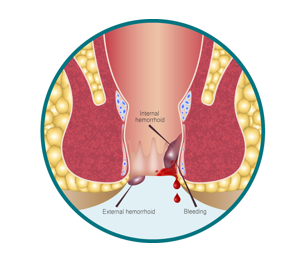Haemorrhoid Banding 
Haemorrhoids, often called piles, are areas in the anal canal where tissue containing blood vessels have become stretched or swollen.
Haemorrhoids can be internal i.e. inside the anus, or external at the anal opening. Increased pressure on the blood vessels of the lower rectum cause them to swell or stretch. The increased pressure can come from constipation, straining as you move your bowels, obesity, diarrhoea, pregnancy, heavy lifting or even prolonged coughing or sneezing.Often there is no obvious cause for the development of haemorrhoids.
The most common symptoms are bleeding, protrusion, discomfort and itching, and sometimes a mucous discharge.
|
During your procedure you will be given sedation. It is important that you arrange for someone to drive you home following your procedure. You are not permitted, by law, to drive yourself. For safety reasons, if you are travelling on public transport, or in a taxi, please arrange for a support person to travel with you.
|